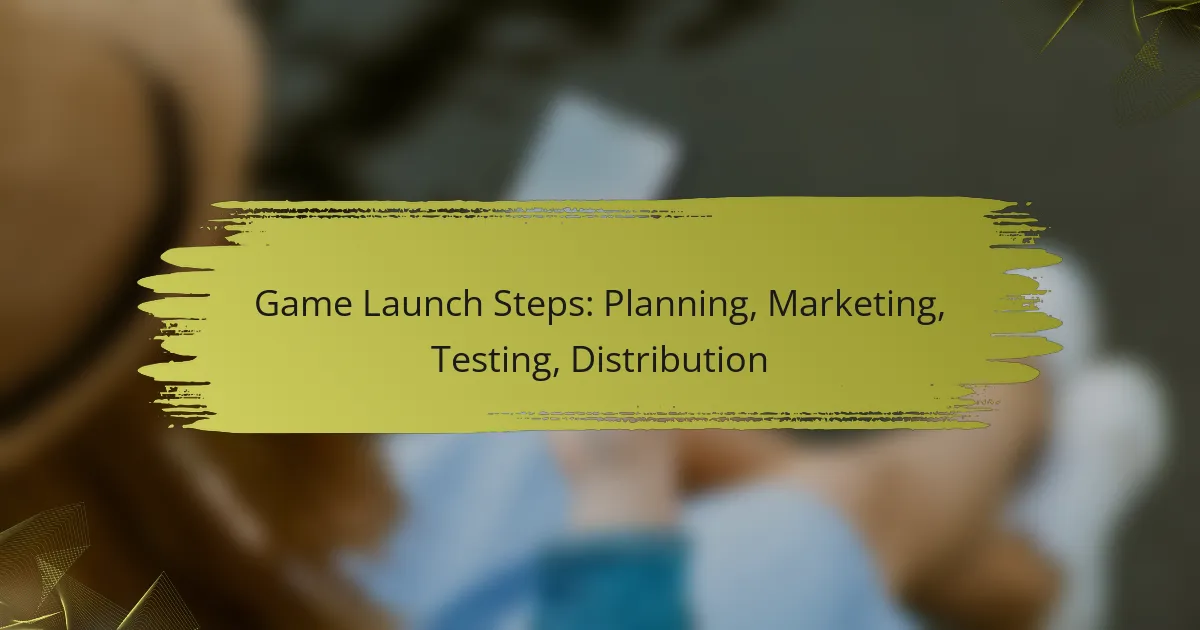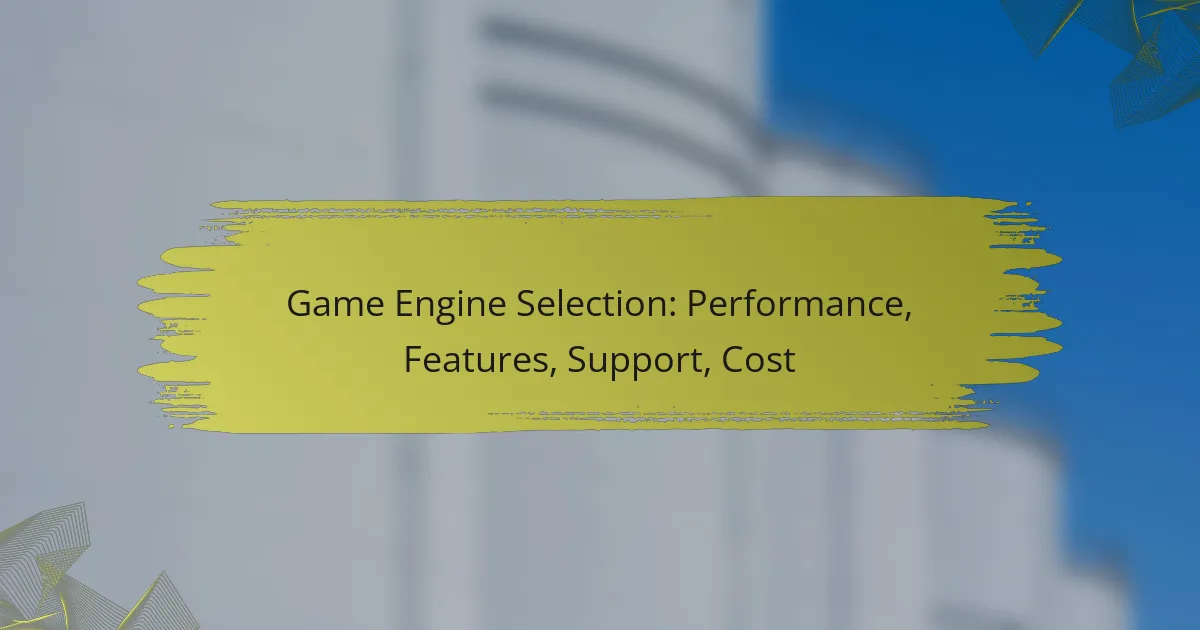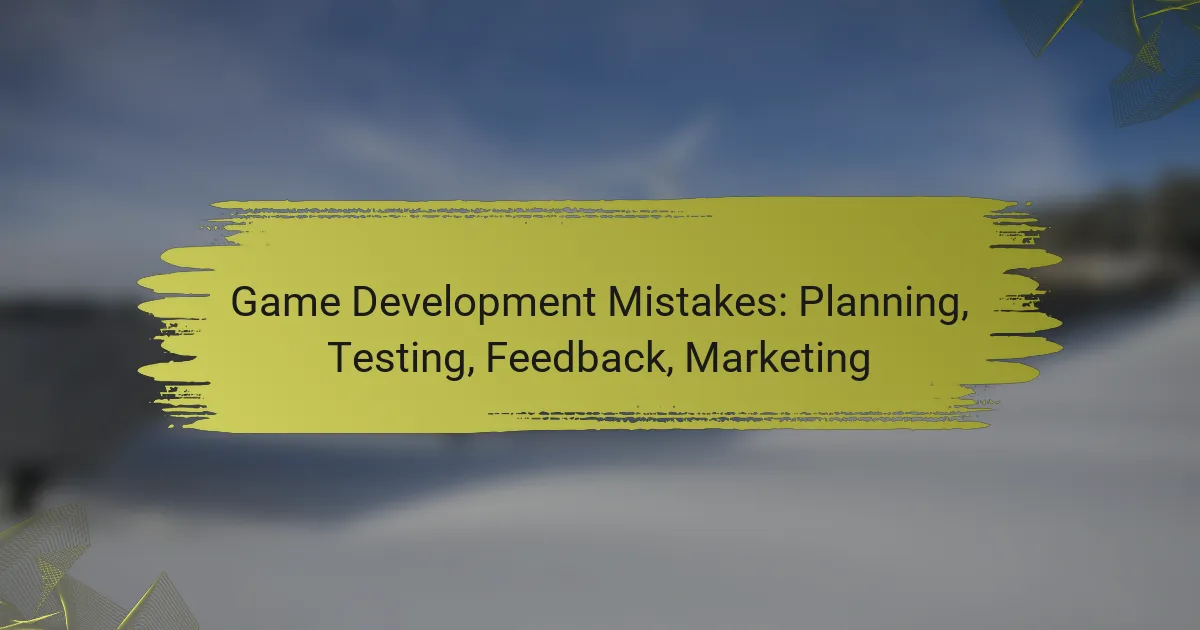Launching a game successfully requires careful planning, strategic marketing, thorough testing, and effective distribution. Key steps include defining your target audience, creating a project timeline, and establishing a budget to ensure efficient development. Additionally, engaging potential players through various marketing channels and conducting extensive testing are crucial for delivering a polished final product that meets expectations.
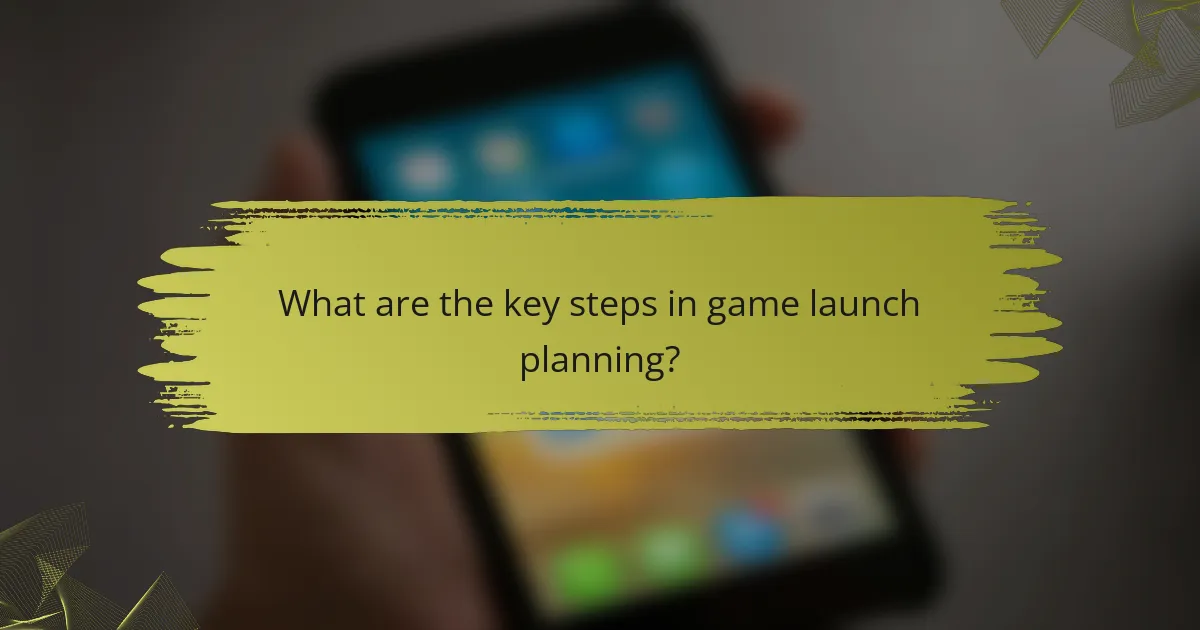
What are the key steps in game launch planning?
Key steps in game launch planning include defining your target audience, creating a project timeline, setting a budget, establishing goals, and choosing the right game engine. These elements ensure that your game is developed efficiently and reaches the intended players effectively.
Define target audience
Identifying your target audience is crucial for tailoring your game’s features and marketing strategies. Consider demographics such as age, gender, gaming preferences, and geographic location. Understanding your audience helps in creating a game that resonates with them and increases engagement.
Utilize surveys, social media insights, and market research to gather data about potential players. This information can guide design decisions and marketing campaigns, ensuring that your game appeals to the right group.
Create a project timeline
A well-structured project timeline outlines the development phases, milestones, and deadlines. Start by breaking the project into stages such as concept development, design, testing, and marketing. Assign realistic timeframes for each phase to keep the team on track.
Use project management tools to visualize progress and adjust timelines as needed. Regular check-ins can help identify bottlenecks early, allowing for timely interventions to stay on schedule.
Set budget and resources
Establishing a budget is essential for managing costs throughout the game development process. Consider expenses related to development, marketing, distribution, and post-launch support. A typical indie game budget can range from a few thousand to several hundred thousand dollars, depending on scope and complexity.
Allocate resources wisely, ensuring that you have the right talent and tools for each phase. Monitor spending closely to avoid overruns and adjust allocations based on project needs.
Establish goals and KPIs
Setting clear goals and key performance indicators (KPIs) helps measure the success of your game launch. Goals may include sales targets, player engagement metrics, or community growth. KPIs should be specific, measurable, achievable, relevant, and time-bound (SMART).
Regularly review these metrics post-launch to assess performance and inform future updates or marketing strategies. This data-driven approach allows for continuous improvement and better alignment with player expectations.
Choose a game engine
Selecting the right game engine is a foundational step that impacts development speed and capabilities. Popular options include Unity, Unreal Engine, and Godot, each offering unique features suited for different types of games. Consider factors such as ease of use, community support, and compatibility with your target platforms.
Evaluate the engine’s licensing costs, as some may require royalties based on revenue. Testing a few engines with prototypes can provide insight into which best fits your project’s needs and your team’s skill set.
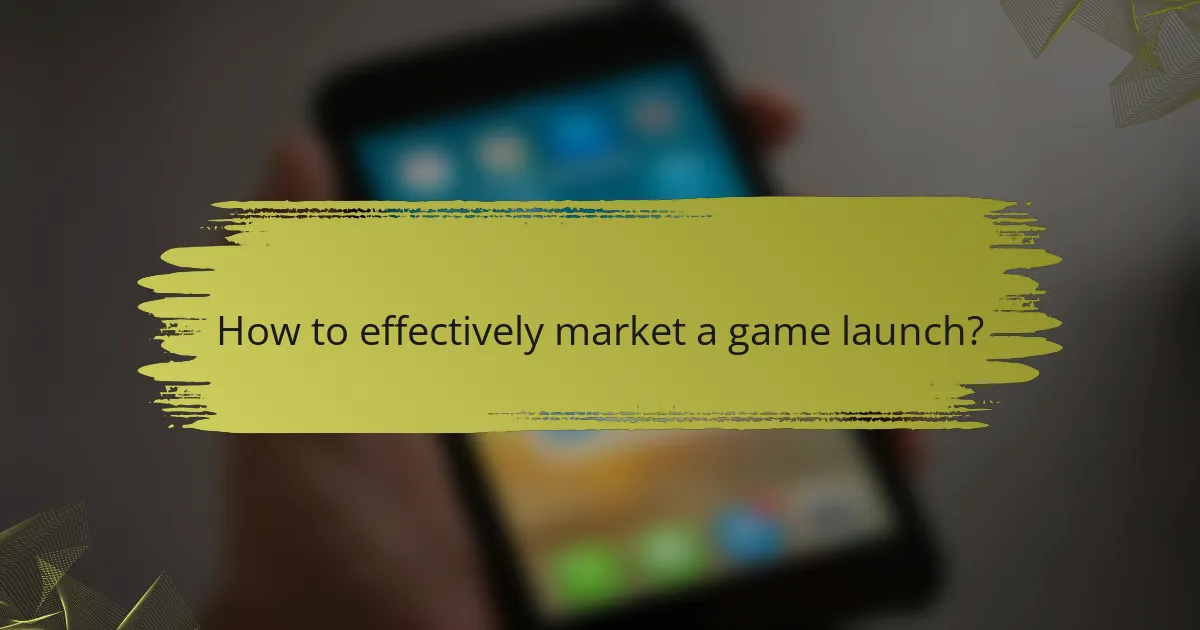
How to effectively market a game launch?
Effectively marketing a game launch involves a strategic approach that encompasses various channels and tactics. Focus on building awareness, engaging potential players, and creating excitement leading up to the release.
Develop a marketing strategy
Creating a marketing strategy is essential for a successful game launch. Start by identifying your target audience, understanding their preferences, and determining the best channels to reach them. Consider setting clear goals, such as increasing brand awareness or achieving a specific number of pre-orders.
Outline your budget and allocate resources accordingly. A well-defined strategy should include timelines for each marketing activity, ensuring that promotional efforts align with the game’s release date.
Utilize social media platforms
Social media platforms are powerful tools for promoting your game. Choose platforms that resonate with your target audience, such as Twitter, Instagram, or TikTok, and create engaging content that showcases your game’s features and visuals. Regularly post updates, teasers, and behind-the-scenes content to maintain interest.
Consider running targeted ads to reach a broader audience. Use analytics tools to track engagement and adjust your strategy based on what resonates most with your followers.
Engage with gaming influencers
Partnering with gaming influencers can significantly enhance your game’s visibility. Identify influencers whose content aligns with your game’s genre and audience. Reach out to them for collaborations, such as gameplay videos, reviews, or live streams.
Offering early access to your game can incentivize influencers to promote it. Their endorsement can help build credibility and attract new players, making it a worthwhile investment.
Implement email marketing campaigns
Email marketing campaigns are effective for keeping potential players informed and engaged. Build an email list by offering incentives, such as exclusive content or early access to the game. Segment your audience to tailor messages based on their interests and engagement levels.
Craft compelling email content that includes updates, launch dates, and special promotions. Aim for a balance between informative and promotional content to maintain subscriber interest and encourage conversions.

What testing methods are essential before launch?
Essential testing methods before a game launch include alpha testing, beta testing, gathering player feedback, and fixing bugs while optimizing performance. These steps ensure the game is polished, functional, and meets player expectations.
Conduct alpha testing
Alpha testing is an internal process where developers test the game for bugs and gameplay issues. This phase typically involves a small group of testers, often within the company, who play the game in a controlled environment.
During alpha testing, focus on identifying major bugs and gameplay mechanics that may not work as intended. It’s crucial to document all findings and prioritize issues based on their severity to ensure a smoother beta testing phase.
Perform beta testing
Beta testing involves releasing the game to a larger audience outside the development team, often referred to as beta testers. This group can include loyal fans or selected players who provide feedback on gameplay, performance, and overall experience.
Consider running both closed beta tests, with limited access, and open beta tests, where anyone can participate. This approach helps gather diverse feedback and identify issues that may not have been apparent during alpha testing.
Gather player feedback
Collecting player feedback is vital for understanding user experience and identifying areas for improvement. Utilize surveys, forums, and social media to engage with players and encourage them to share their thoughts on the game.
Focus on specific aspects such as gameplay mechanics, graphics, and overall enjoyment. Analyzing this feedback can help prioritize changes and enhancements before the final launch.
Fix bugs and optimize performance
After gathering feedback, the next step is to address identified bugs and optimize the game’s performance. Prioritize fixing critical issues that affect gameplay and stability, ensuring a seamless experience for players at launch.
Optimization may involve improving load times, reducing lag, and enhancing graphics performance. Regularly test the game after each fix to confirm that changes have not introduced new issues.
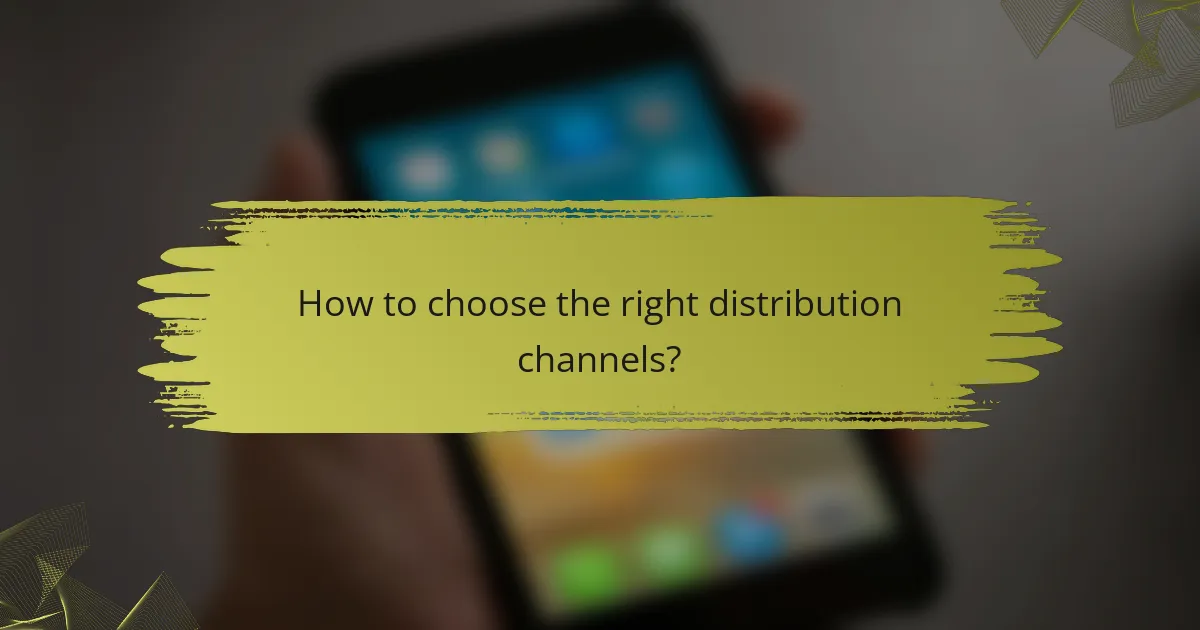
How to choose the right distribution channels?
Selecting the right distribution channels is crucial for maximizing your game’s reach and sales. Consider factors such as your target audience, the nature of your game, and the platforms they prefer to use.
Evaluate digital distribution platforms
Digital distribution platforms, such as Steam, Epic Games Store, and itch.io, offer a wide range of options for game developers. Assess each platform’s audience demographics, revenue share, and promotional tools to determine which aligns best with your game’s goals.
For example, Steam has a vast user base but takes a significant percentage of sales, while itch.io offers more favorable revenue sharing for indie developers. Consider your budget and marketing strategy when making your choice.
- Research platform fees and revenue splits.
- Examine user engagement and community features.
- Look for promotional opportunities like seasonal sales.
Consider physical retail options
Physical retail options can still be relevant, especially for certain genres or demographics. Evaluate local game stores, larger retailers, and specialty shops to see if they align with your distribution strategy.
When considering physical distribution, think about production costs for physical copies, packaging, and shipping. You may also need to negotiate shelf space and promotional support with retailers.
- Identify potential retail partners and their customer base.
- Calculate costs versus expected sales to determine feasibility.
- Plan for marketing support to drive in-store sales.
